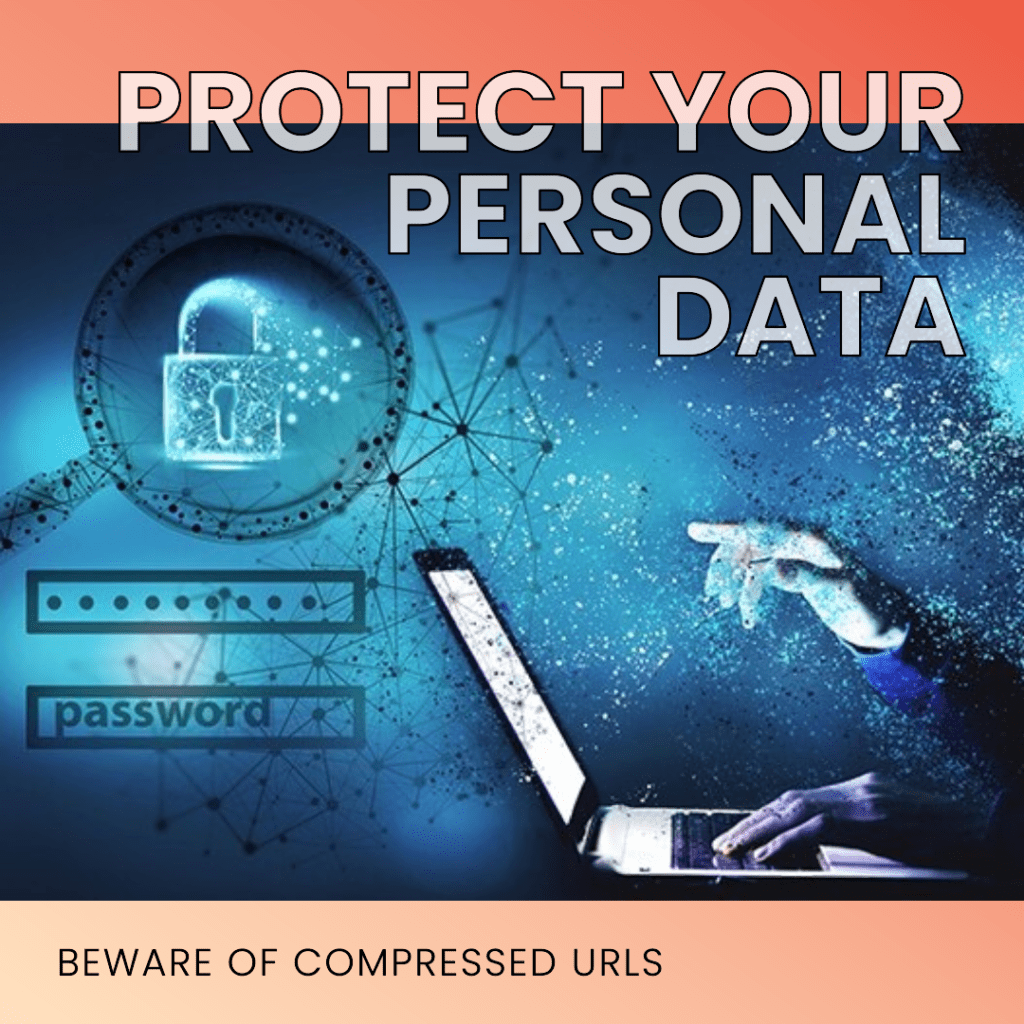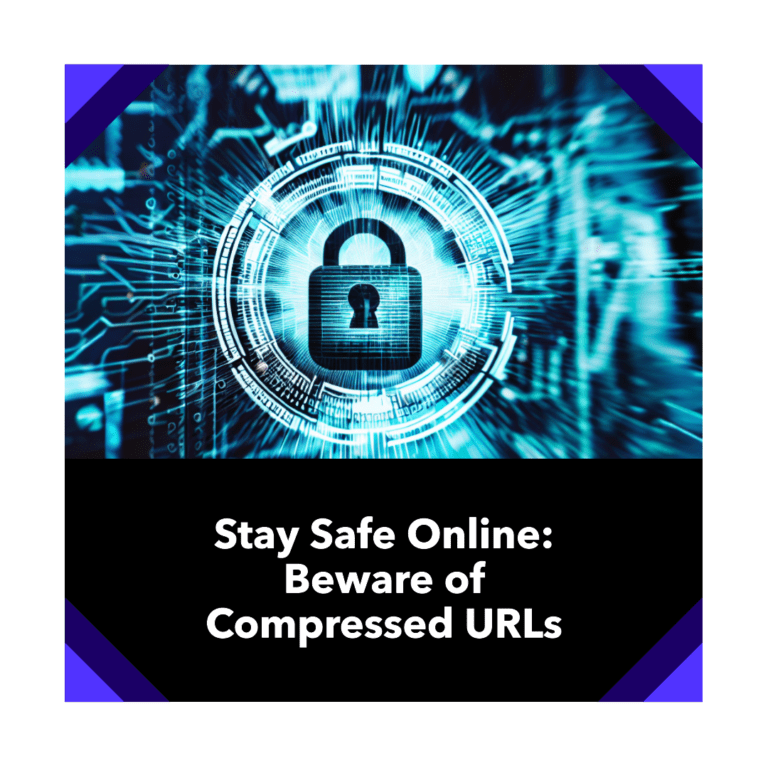Understanding the Risks: Unveiling the Security Concerns of Compressed URLs
As technology continues to evolve, so do the methods used by cybercriminals to exploit vulnerabilities. One such method that has gained popularity in recent years is the use of compressed URLs. These shortened links, often used for convenience and brevity, pose a significant security concern for users.
Compressed URLs can be deceptive, as they hide the true destination of a link behind a seemingly harmless shortened address. This makes it easier for cybercriminals to trick unsuspecting users into clicking on malicious links. In some cases, these links may lead to phishing websites designed to steal personal information, or they may redirect users to sites hosting malware. This not only puts users at risk of identity theft and financial loss but also exposes their devices and networks to potential security breaches.
The Hidden Dangers: Exploring the Dark Side of URL Shorteners
URL shorteners have become increasingly popular in recent years, providing a convenient solution for sharing long and cumbersome URLs across various online platforms. However, behind their apparent simplicity lies a darker side that exposes users to potential risks and dangers. One of the primary concerns with URL shorteners is their susceptibility to link manipulation and redirection. Unscrupulous individuals can exploit these services to lead unsuspecting users to malicious websites or phishing pages, where sensitive information can be stolen.
Another hidden danger of URL shorteners is their role in obfuscating the true destination of a link. While this may be useful for conserving characters in a message or tweet, it also creates an environment where users have to blindly trust the link provided without being able to review the destination beforehand. This lack of transparency increases the risk of falling victim to various online scams and cybercriminal activities. Users may unknowingly click on links that lead to malware-infected websites, resulting in the compromise of their devices and loss of personal data.
The hidden dangers of URL shorteners underscore the need for users to exercise caution and employ protective measures when interacting with compressed links. The next sections of this article will delve into the various security concerns associated with URL shorteners in more detail and explore strategies for defending against potential threats. By understanding the risks and adopting best practices, users can navigate the online landscape with greater confidence, mitigating the potential dangers posed by compressed URLs.

Vulnerability Exploitation: How Cybercriminals Target Compressed URLs
In the ever-evolving landscape of cyber threats, compressed URLs have become prime targets for cybercriminals to exploit vulnerabilities. With the rise in popularity of URL shorteners, such as Bit.ly and TinyURL, hackers have found new opportunities to carry out their malicious activities. By exploiting the inherent weaknesses of compressed URLs, cybercriminals can trick unsuspecting users into clicking on links that lead to harmful websites or initiate harmful downloads. This type of vulnerability exploitation highlights the need for users to exercise caution when interacting with compressed URLs and to be aware of the potential risks associated with them.
One common technique used by cybercriminals to exploit compressed URLs is link manipulation. By disguising the true destination of a compressed link, they can redirect users to sites that are designed to steal confidential information, install malware, or engage in other malicious activities. For instance, a hacker may send a suspicious email or message containing a compressed URL that appears to be legitimate.
However, once clicked, the link can lead users to a cloned website that looks identical to a trusted platform, such as a banking site or social media platform. Users who enter their login credentials or other sensitive information on these malicious sites unknowingly hand over their data to cybercriminals. Successful vulnerability exploitation relies on the ability of hackers to deceive users and exploit the trust associated with shortened URLs.
Security Concerns and Mitigation Measures for Compressed URLs
| Security Issue | Description | Mitigation Strategies |
|---|---|---|
| Phishing Attacks | Attackers use compressed URLs to disguise malicious links, tricking users into revealing sensitive information like login credentials or credit card numbers. | - Verify the source of the link. - Use URL expanders to check the destination before clicking. |
| Malware Distribution | Compressed URLs can hide links to websites hosting malware or initiate malware downloads to the user's device when clicked. | - Use URL expanders to check the destination before clicking. - Maintain updated antivirus software. |
| Link Spoofing | Attackers impersonate legitimate websites or make it appear as if a link is coming from a trusted source using compressed URLs, tricking users into clicking malicious links. | - Verify the source of the link. - Use URL expanders to check the destination before clicking. |
| Clickjacking | Compressed URLs are used to overlay a legitimate website with a hidden button or link, tricking users into clicking without their knowledge. | - Be cautious when clicking links, especially in emails and on social media. |
| Lack of Transparency | Compressed URLs hide the original destination of the link, deceiving users into clicking malicious or phishing sites. | - Use URL expanders to check the destination before clicking. - Verify the source of the link. |
| Exposing Private Data | Predictable compressed URLs can expose private or sensitive information, such as files, addresses, or directions stored in cloud services. | - Be cautious when using or receiving compressed URLs, especially in organizational settings. |
| Brute Force Attacks | Shortened URLs can be brute-forced, revealing secret documents or editable content that can be infected with malware. | - Be cautious when using or receiving compressed URLs, especially when sharing sensitive or confidential information. |
Phishing Attacks: Unmasking the Threats Lurking Behind Shortened URLs
Phishing attacks have become increasingly prevalent in today's digital landscape, with cybercriminals employing various strategies to deceive unsuspecting users. One tactic that has gained popularity is the utilization of shortened URLs to mask the true destination of a link. By using URL shorteners, attackers are able to make their malicious links appear harmless and trustworthy, luring victims into clicking on them without suspicion.
Once the user clicks on the shortened URL, they are redirected to a fraudulent website designed to capture sensitive information, such as login credentials or banking details. This type of phishing attack has proven to be highly effective, as users are often unaware of the potential risks lurking behind seemingly innocent shortened links.
The inherent problem with compressed URLs lies in the fact that they conceal the actual destination of a link, making it difficult for users to distinguish between legitimate and malicious websites. Most URL shorteners do not provide any transparency regarding the final destination URL, leaving users vulnerable to falling victim to a phishing attack.
Attackers take advantage of this lack of visibility to craft deceptive messages, masquerading as legitimate sources and urging recipients to click on the shortened link. Once the victim is redirected to the malicious website, they may be prompted to enter sensitive information, unknowingly providing cybercriminals with access to their personal data. This highlights the urgent need for individuals to exercise caution when encountering shortened URLs, as they may be concealing an array of phishing threats.

Malware Distribution: Uncovering the Role of Compressed URLs in Spreading Threats
Malware distribution has become an increasing concern in the digital landscape, with cybercriminals exploiting compressed URLs as a tool for spreading threats. These shortened links provide an easy way for attackers to mask the true destination of malicious content. By using URL shorteners, they can hide the true nature of the URLs and trick unsuspecting users into clicking on them. Once clicked, these compressed URLs can unleash a variety of malware, such as viruses, ransomware, and spyware, onto the victim's device.
The role of compressed URLs in spreading threats lies in their ability to bypass security measures and evade detection. Traditional antivirus software and email filters may not recognize the hidden dangers lurking behind these shortened links. Furthermore, the viral nature of social media platforms makes it easier for malware to spread rapidly through the sharing of compressed URLs. This makes it crucial for individuals and organizations to be aware of this risk and take appropriate precautions to protect themselves from falling victim to malware distribution through compressed URLs.
Social Engineering Techniques: Manipulating Users through Shortened Links
Social engineering techniques pose a significant threat in the realm of online security. Cybercriminals have found ways to exploit users through the manipulation of shortened links. These shortened URLs, commonly used for convenience and sharing purposes, can be easily masked to deceive unsuspecting users. By leveraging social engineering tactics, cybercriminals can trick individuals into clicking on malicious links, leading to dire consequences.
One common social engineering technique utilized in the manipulation of users through shortened links is the use of compelling and enticing messages. Cybercriminals often craft messages that evoke a sense of urgency, fear, or curiosity, aiming to grab the attention of potential victims. These messages may claim to offer exclusive deals, urgent notifications, or sensational news that entice users to click without giving it a second thought.
The dangers of social engineering, combined with the ease of sharing compressed URLs, create a perfect storm for cybercriminals. The ability to manipulate users through shortened links highlights the need for heightened vigilance when navigating the digital landscape. As users, it is essential to be skeptical of unfamiliar or suspicious messages and to exercise caution when clicking on shortened URLs.
URL Hijacking: Revealing the Risks of Compressed URLs Redirecting to Malicious Sites
URL hijacking is a grave concern when it comes to the use of compressed URLs. This malicious technique involves cybercriminals redirecting users to malicious sites, often without their knowledge or consent. The risks associated with URL hijacking are significant, as unsuspecting users can unknowingly be led to websites that distribute malware, steal sensitive information, or engage in phishing attacks.
One of the main ways that URL hijacking occurs is through the manipulation of shortened link destinations. Cybercriminals exploit vulnerabilities in the URL shortening services, altering the destination link to redirect users to harmful websites. This can be especially dangerous when users click on compressed URLs shared on social media platforms, where the original long URL is often hidden. As a result, users may click on seemingly harmless shortened links, only to end up on websites that compromise their digital security and privacy. It is important for users to be cautious and verify the destination of a compressed URL before clicking on it to mitigate the risks associated with URL hijacking.
Tracking and Privacy Concerns: Examining the Implications of Shortened URLs
With the increasing popularity of URL shorteners, tracking and privacy concerns have become a growing issue for internet users. When using a shortened URL, it is important to understand that these services often collect valuable information about users' online activities. This includes data such as IP addresses, browser types, and even the specific links that are clicked. While the intention behind this data collection may vary, it raises questions about the potential misuse of personal information and the implications on user privacy.
One of the main implications of shortened URLs is the potential for third-party tracking and analytics. When a user clicks on a compressed link, not only does the service receive information about that click, but the website that the user is redirected to may also have their own tracking mechanisms in place. This can result in a trail of data being generated, giving various parties insights into users' online behavior. Furthermore, some link shortening services may even sell or share this data with advertisers, further compromising user privacy. As a result, individuals should be cautious about the links they click on and consider the potential privacy risks associated with shortened URLs.
Defending Against Attacks: Best Practices for Safely Navigating Compressed URLs
While compressed URLs present security risks, there are steps that users can take to defend themselves against potential attacks. One of the best practices for safely navigating compressed URLs is to exercise caution when clicking on unfamiliar links. It is essential to verify the source of the link and ensure it comes from a trusted sender or reputable website. Additionally, users should be vigilant when clicking on shortened URLs shared through email or social media platforms, as these are often used for phishing attacks and malware distribution. By being aware of the potential dangers and exercising caution, individuals can mitigate the risks associated with compressed URLs.
Another important defense against attacks involving compressed URLs is to use URL expansion services. These services allow users to preview the full link before clicking on it, enabling them to assess its safety. URL expansion services can help uncover any hidden dangers or malicious intent behind shortened URLs, preventing users from unknowingly exposing themselves to threats. Furthermore, utilizing browser extensions or plug-ins that warn about potentially risky links can add an extra layer of protection. By taking advantage of these tools and services, individuals can enhance their defense against attacks when navigating compressed URLs.
Choosing a Secure URL Shortener: Evaluating the Safest Options for Link Shortening
When it comes to choosing a secure URL shortener, there are several options available in the market. It is important to evaluate the safest options to ensure that your links are protected from potential threats. One of the key factors to consider is the reputation of the URL shortening service provider. Look for well-established and trusted providers with a track record of maintaining a high level of security. Additionally, consider the features offered by the shortening service. Some providers offer additional security measures such as link expiration, password protection, and the ability to customize shortened URLs to make them more unique and less susceptible to manipulation.
Another important aspect to consider when selecting a secure URL shortener is the level of user privacy offered by the service. Look for providers that prioritize user privacy and have clear policies in place to protect your personal information. Additionally, consider the level of encryption used by the shortening service. Opt for providers that use strong encryption methods to ensure that your links and data are securely stored and transmitted. Lastly, consider the ease of use and reliability of the URL shortener.
Look for providers that offer a user-friendly interface and have a proven track record of delivering links efficiently and reliably without any downtime. Choosing a secure URL shortener is an essential step in protecting your links and ensuring a safe online experience.
Extract from above discussion
Compressed URLs, while convenient for shortening lengthy web addresses, come with a variety of security concerns. A significant security issue with compressed URLs is that they can obfuscate the final destination, making it easier for malicious actors to mask phishing sites or malware downloads. Users often find it challenging to determine the legitimacy of these URLs because of their shortened nature, leaving them more vulnerable to clicking on something harmful.
When asking, "what security issue is associated with URLs?" especially the compressed kind, the answer is multi-faceted. Beyond just obfuscation, these links may also be used in large-scale phishing campaigns because they appear less suspicious and are more user-friendly. This has led many to wonder, "which may be a security issue with compressed URLs?" With the prevalence of such security issues with compressed URLs, users need to be more cautious and employ tools that can preview the destination before clicking.
In today's digital age, it's essential to be aware of the compressed URLs security issue. Their convenience, unfortunately, can be weaponized, leading to significant cybersecurity threats. As the debate continues over the balance between utility and safety, it remains clear that understanding the potential dangers is the first step in safeguarding oneself online.
What is a URL shortener?
A URL shortener is a tool that takes a long URL and creates a shortened version that redirects to the original URL when clicked.
Why should I be concerned about the security of URL shorteners?
URL shorteners can pose security risks as they can be misused by cybercriminals for phishing attacks, malware distribution, and social engineering.
How do cybercriminals target compressed URLs?
Cybercriminals exploit vulnerabilities in URL shorteners by creating shortened links that lead to malicious websites or by using them to distribute malware.
What are the risks associated with shortened URLs redirecting to malicious sites?
URL hijacking is a major risk where shortened URLs can redirect users to malicious websites designed to steal personal information or infect devices with malware.
Can shortened URLs be used for phishing attacks?
Yes, cybercriminals can use shortened URLs to deceive users into clicking on them and redirecting them to fake websites to steal sensitive information.
Are there any privacy concerns associated with using shortened URLs?
Yes, using shortened URLs can compromise privacy as they can be used to track user behavior and gather personal information without the user's knowledge or consent.
How can I safely navigate through compressed URLs?
It is important to be cautious and implement best practices such as verifying the source of the link, using a secure URL preview service, and always being aware of potential risks.
How can I choose a secure URL shortener?
When choosing a URL shortener, consider factors such as reputation, security features, privacy policies, and the ability to preview the destination URLs to ensure safety.
Are there any best practices for defending against URL shortener attacks?
Yes, some best practices include keeping software and devices up to date, using reliable security software, being cautious while clicking on shortened links, and educating oneself about potential risks.
What are the implications of using compressed URLs for malware distribution?
Compressed URLs can be used to distribute malware, leading to infections, data breaches, and financial loss for individuals and organizations. It is important to be cautious while clicking on such links.





Pingback: How to Protect Your Organization from the Evolving Threat of Cyberattacks - techlooters.com